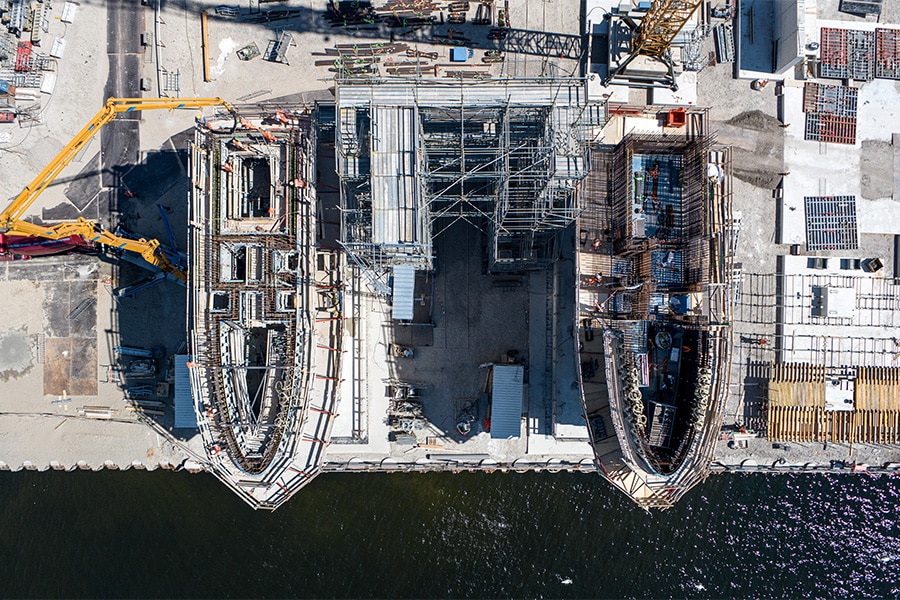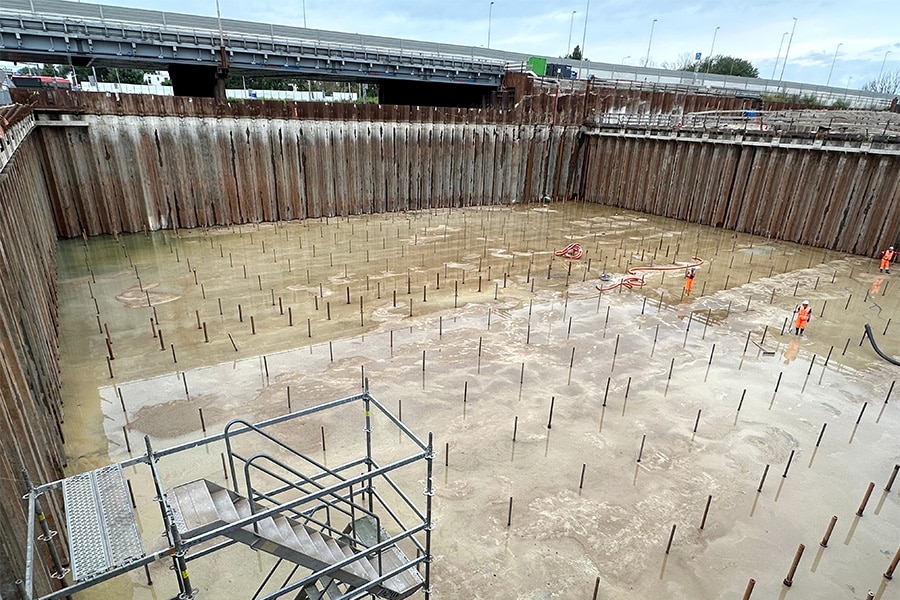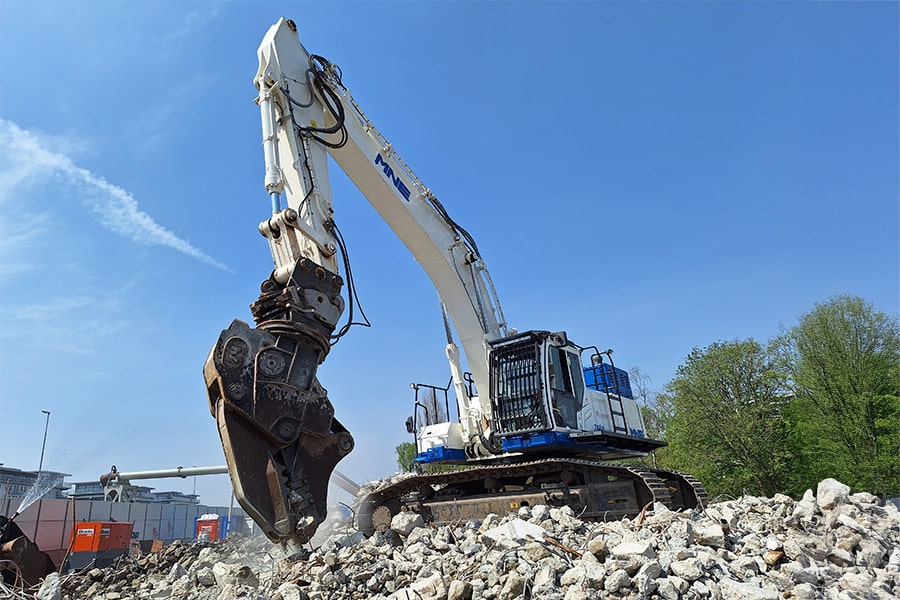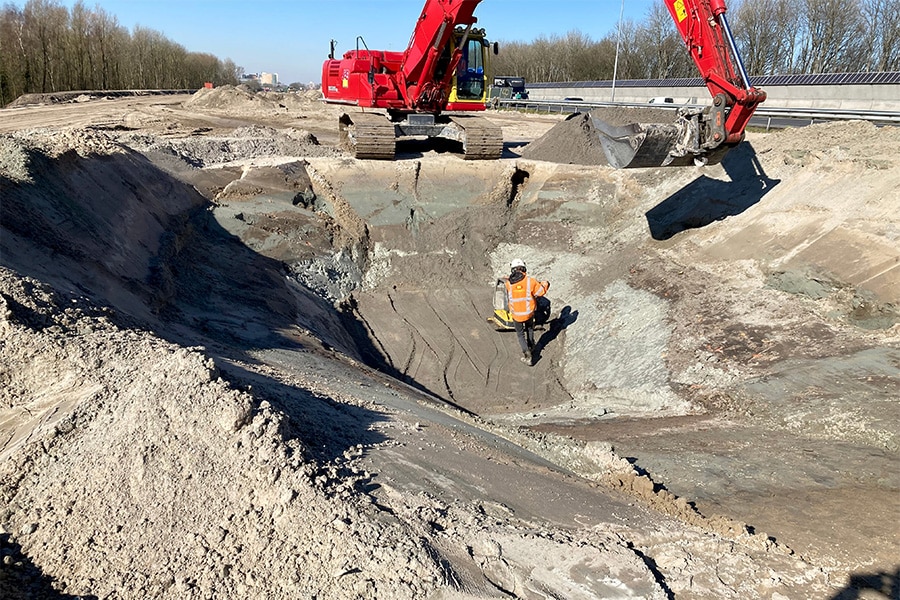
An innovative project for water quality and safety
Construction of salt dam at IJmuiden sea lock
The construction of the salt dam at Zeesluis IJmuiden is an impressive feat of Dutch hydraulic engineering. This special project, known as Selective Withdrawal, is being built on behalf of Rijkswaterstaat and carried out by the renowned construction company Van Hattum en Blankevoort. Jan Rienstra, responsible for the environmental management of this project from Rijkswaterstaat, explains why the salt dam is being built and why this project is of great importance for water quality.
The construction of the salt dam at Sea Lock IJmuiden is a project that is impressive not only because of its technical complexity, but also because of its importance for water quality and sustainability. According to Jan, it is an innovation in itself and a unique structure. "The construction is certainly not a sinecure. In fact, the salt dam is brilliant as an idea. It shows how Rijkswaterstaat continues to innovate to ensure good water quality and safety in the execution of works, among other things. Because of the use of IJmuiden Sea Lock, compared to the North Lock, much more saltwater flows into the North Sea Canal. This in itself is not a problem for the North Sea Canal, but it is a problem for the surrounding area, because of the negative effects on water quality, nature, agriculture, horticulture and our drinking water. That is why we are building a salt dam in the Binnenspuikanaal of the lock complex in IJmuiden. It is a kind of (saltwater) letterbox with an opening at the bottom of the dam at a depth of between 16 and 23 meters. Because saltwater is heavier than freshwater, the saltwater sinks to the bottom. Through an opening at the bottom of the salt dam, the salt water flows back to the sea through the Spui and Pumping Station complex. The fresh water is stopped by the salt dam and remains in the North Sea Canal." Until the salt dam is completed in late 2024, supply-driven shipping will be used to control salinity in the North Sea Canal. This means that in addition to Zeesluis IJmuiden, the Noordersluis will also be used to lock ships. It will be determined per ship whether the ship goes through the Noordersluis or Zeesluis IJmuiden.

Scale model tests at Deltares
To make sure that the salt dam will soon function optimally, Rijkswaterstaat conducted extensive tests on a 1:40 scale model at Deltares, a marine engineering research center. "These tests have given us valuable insights into how the saltwater will behave under different conditions," explains Jan. "These extensive tests are essential to ensure that we achieve the desired effect with the salt dam."
Underwater drones
One notable aspect of salt dam construction is the use of robotics. Instead of using human divers to inspect the dam walls, underwater drones make this task safer and more efficient. These robots perform inspections and collect data without the physical risks to divers. This illustrates the project's commitment to safety and efficiency, taking advantage of new technologies.
Safety above all
With such a complex project, safety is always paramount. Building the salt dam requires not only advanced techniques, but also a well thought-out safety plan. Jan emphasizes that Rijkswaterstaat and Van Hattum en Blankevoort apply the highest standards to ensure the safety of workers and the environment. "Safety is our highest priority. We have to make sure that the construction proceeds safely, with local residents also experiencing as little noise and traffic disruption as possible."
Exciting moment: fall 2024
Construction of the salt dam is in full swing and Jan Rienstra is eagerly looking forward to the fall of 2024, when the salt dam will be put into operation. "This is an exciting time for us and everyone involved," he says. "Personally, I am looking forward to the statistics of the five-day average of salinity. Will this actually drop when the salt dam is in use? If everything goes according to expectations, this will also be the time to decide to put Sea Lock IJmuiden into full operation."



